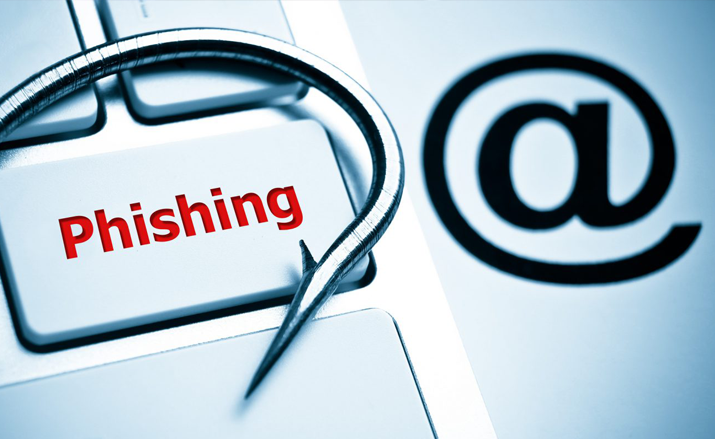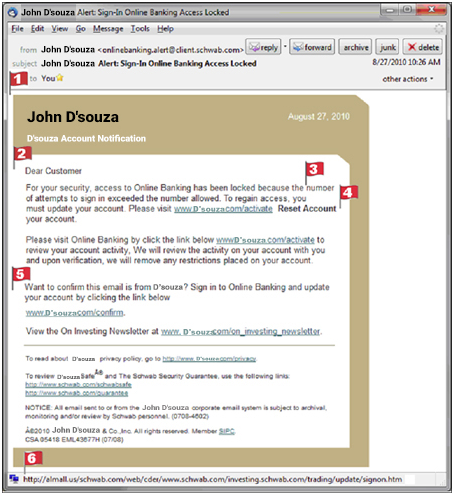

Phishing is a kind of online scam where lawbreakers send an email that has all the earmarks of being from an authorize company and request you to provide sensitive data. This is typically done by including a connection that will seem you to take the company's site to fill in your data however the site is a smart fake and the data you give goes directly to the convicts behind the scam. The term 'phishing' is a turn on the word fishing, because criminals are dangling a fake email that looks genuine, and the site that looks real to ‘lure’ clients trusting that they will 'bite' by giving the data the crooks have asked for -, for example, Visa numbers, account numbers, passwords, usernames, and more.

Here are some clues indicating this email is actually a scam:
The email isn't addressed to the recipient. If the recipient was genuinely being refer as by John D’souza that there was an issue with their account, they would know the recipient.
One more thing they don't have the foggiest idea about the recipient's name; "Dear Customer" isn't an identifier.
The recipient’s hasn't endeavored to sign into a John account, so couldn't have surpassed the number of attempts allowed.
Grammatical mistakes: The words Online Banking are promoted all through the content. Also, in case that you read cautiously, the text says "Please visit www.john.com/enact “Reset your Account" which obviously doesn't bode well, however since a many people check messages more often, grammatical errors that are this small usually don’t get noticed.
They endeavor to console recipients by urging them to affirm the email is from John….. By utilizing a link they give.
Have look at the sixth banner; this demonstrates the genuine email address showed when you drift your mouse over any link on this page (which is a warning in itself, what company would have these activities point to a similar link?). See that the site is really http://almall.us? The con included the words/john.com/after their site's actual name trying to look authentic; however this site is definitely not real.
Seeing any of these blemishes is sufficient to reveal to you the email is a phishing attempt – however imagine a scenario in which these errors aren’t present?
A clever scammer could have remedied every one of these mix-ups, including knowing the recipient's name and email address, and covering their URL in a substantially more persuading way. In case they had completed the task carefully there would have been nothing in the message to trigger your alerts – despite the fact that the email would in any case be fake.
Applying these two activities reliably will shield you from online Scams:
If you find you are the victim of a phishing scam, immediately change all of your passwords. If you are using the same password for multiple sites cyber criminals could be in the process of trying to access other commonly used sites. Consider using a password manager in the future to lower your risk profile, and make sure you have an antivirus solution with secure web browsing features installed and up to date.